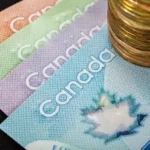By Judy Kennedy, Orange Zest, Annapolis NDP, December 2018
Nova Scotia’s NDP election school, held this fall, was marked by a preponderance of young attendees who know how things must change for them and who are prepared to work for it. What young people want these days are changes to our social programs – free post-secondary education, affordable housing, well-paying jobs, accessible health care. And they want a healthy planet to live on. These are all programs that Nova Scotia’s NDP House members have excelled at promoting since they were elected.
A concept currently making news particularly with young folks in the USA is the Green New Deal. It aims at re-purposing the environmental and the economic sec-tors, making both more equitable. Based on Roosevelt’s New Deal of World War II, it proposes moving to a low-carbon economy with renewable energy, and the restoration of forests and wetlands. But it does so while aiming for alternatives to the socioeconomic inequities that communities now face in the US and beyond. For example it defines as one of its targets a job guarantee for all unemployed; as another, a minimum wage of $15. It calls for a high tax on the incomes of the wealthy and a tax on bank transactions, currently not taxed at all…while shoes are!
Supported by two groups of young people, Representative-elect Alexandria Occasional will present a plan to the Democratic select committee on the environment to draft legislation that will advance the Green New Deal’s goals. These have been set out in seven sections under the environmental component and five under the socioeconomic. They deal with the how-to’s as well as the goals themselves. The unique feature of the plan is that it seeks common solutions to multi-disciplinary problems.
Questions immediately arise as to the funding of these proposals: where will the money come from? It will come, as it did for the first New Deal, mainly from the federal government itself, the sole creator of its sovereign non-convertible currency. As well it will come from a system of public banks and locally based venture funds.
The central banks of countries using such currency, particularly if they are publicly owned by their governments as Canada’s is, can ensure that returns on such investments go to the federal government, not to private investors as those, for example, associated with Canada’s privately funded Infrastructure Bank now do.
Money drives the economy and the federal government spends it into existence by depositing it in the accounts of people and projects it agrees to support. What if the government goes into debt? All money is government debt, whether it is spent directly into the economy or it is introduced as interest-bearing bonds which are bought by banks, investors and savers. Bonds, along with taxes, fees and fines, withdraw money from the economy when the government and the central bank decide that the inflation rate may be too high or that the demands of the spenders need to be reduced. The government deficit is the difference between money it spends to enhance the productive economy minus the money it withdraws through taxes – expenses minus revenue.
One economist who supports the Green New Deal is Dr. Stephanie Kelton, professor of economics at Stony Brook University and chief economic advisor to Bernie Sanders during his presidential campaign. She writes: “Anything that is technically feasible is financially affordable. And it won’t be a drag on the economy – unlike the climate crisis itself, which will cause tens of billions of dollars worth of damage to American homes, communities and infrastructure each year. A Green New Deal will actually help the economy by stimulating job growth and consumer spending, as government spending has often done.”
One myth that Kelton disposes of is that of federal taxpayers’ money paying for anything. Tax returns are deleted. They are spent on nothing. Yet taxes do serve other purposes: reducing overall demands, changing behaviours of groups or industries (smoking, burning fossil fuels). Kelton adds: Taxes should be raised to break up concentrations of wealth and income. And on the other side, Kelton supports a job guarantee program.
As progressive thinkers move towards these goals, the role of money is seen as critical to their implementation. That our federal government creates its money “out of thin air” is enabled by legislation. But what about the provinces? Through the Bank of Canada Act powers they are entitled to borrow at low interest rates. Yet since the mid seventies they have increasingly borrowed from private banks and sold bonds, both debt creating transactions, at interest rates higher than the B of C’s. We ask why this is so.
We note that the B of C’s profits come back to the federal government, not to the 1% as private banks’ profits do.
Furthermore we know that banks, too, now create money “out of thin air” although they are no longer required to hold even a percentage of the amount loaned on deposit. Because of the precarious nature of their operations, banks were in crisis a decade ago when the federal government bailed them out. During the 2009-10 budget process, the Minister of Finance, in a table titled Extraordinary Financing Framework, estimated that cost to be $103.7 bn for 2009 and $101.2 bn for 2010. David Macdonald of the Canadian Centre for Policy Alternatives was able to track some of those payments to financial institutions: “At its peak in March 2009, support for Canadian banks reached $114 billion,” he stated (CBC News, April 30, 2012).
So why aren’t provinces – constitutionally recognized governments of Canada – financed by the federal government’s sovereign currency too? Particularly as banks’ current priorities show that their gains go increasingly to the 1%, threatening us with another crisis, precisely the trend that the Green New Deal hopes to reverse.
An alternative method of financing subnational governments, i.e., states, regions, and, if they are big enough, municipalities, is that of public banks.
The model is the century-old Bank of North Dakota, wholly owned by that state. As revenues are deposited in the bank, investments are made as well as state expenses paid. Profits are returned to the state. The BND makes loans to local residents, businesses and community undertakings at lower rates than other banks. The people benefit hugely and now 100 years after its launch, other states and municipalities are scrambling to create their own. Provinces could do likewise.
Our challenge, yet again as a party that puts people before profits, is to rally with those who are on progressive paths towards saving the planet while protecting its people. That will involve challenging corporate control, particularly the financial sector that has set a course so weighted in its favour. We can do it but we will need help with the task. So we welcome aboard those young folks willing to give us a hand.
Here’s to 2019!
Orange Zest is the newsletter of the Annapolis, Nova Scotia, NDP members. Long-time COMER member Judy Kennedy is the editor. The December issue introduces us to the Green New Deal promoted by US Congressional Representative Alexandria Ocasio-Cortez. The GND focuses on environmental conservation







